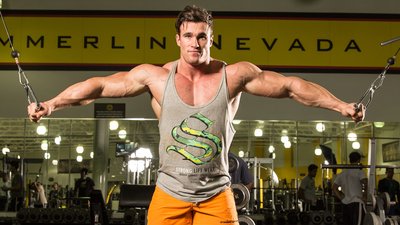Monday is chest day, and that means waiting your turn at the bench press. Get in line, bro.
But what if, in an alternate universe, that didn't have to happen? What if you had many different options for how to construct your chest day? It turns out you do.
Unshackle yourself from stale training habits that are holding back your pectoral development! Start by learning the eight things you should never do on chest day!
1. Never Train Delts Or Triceps Immediately Before Chest
The pectorals are considered one of the larger muscles, and multijoint bench presses engage them effectively, along with both the triceps and deltoids. The last thing you'd want, then, is to start your chest session with your triceps fatigued because you trained them first, or have them restricted by delayed-onset muscle soreness (DOMS) from the previous day's session. Same goes for the delts. When a muscle group is compromised because you just trained it, it's easy to guess which area will give out first when moving over to chest exercises.
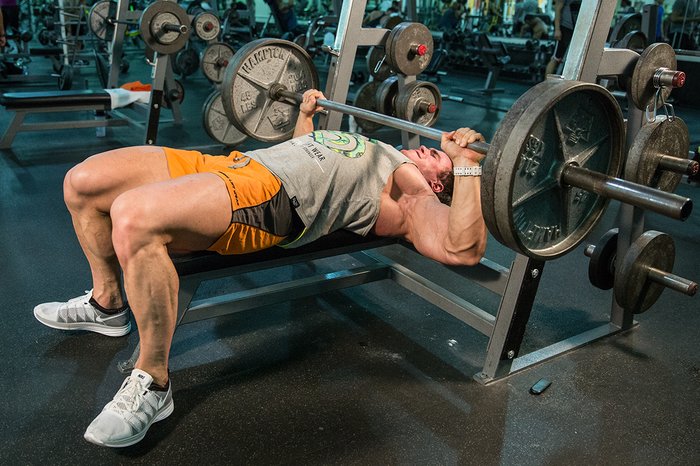
On chest day, you want to take your pecs to failure, not be limited by fatigue or soreness in your triceps or shoulders.
On chest day, you want to take your pecs to failure, not be limited by fatigue or soreness in your triceps or shoulders. Having those muscle groups fresh when you begin your chest workout should be a high priority.
The solution: Don't train delts or triceps for at least two days before chest. You'll get a much better chest workout out of it!
Also, simply arrange your workout in a way that those other pushing muscles are completed after your chest session, never before. So it's "chest and shoulders," not "shoulders and chest." And if you train triceps on the same day you work chest, it's always chest, then triceps.
2. Never Feel Married To Certain Equipment
You can also grow stale using the same kind of equipment for months or years on end. If every chest workout you've ever done started with the barbell, you might be due for a change of pace! Plenty of great chests have been built using other types of equipment—particularly dumbbells. Each offers advantages that can be incorporated to reintroduce variety into your training.
Dumbbells are certainly harder to control, but this is actually a good thing. They allow each side to work independently, offering a longer range of motion both at the bottom and top of each move. They also allow much greater freedom in the shoulder joint, which makes them an option if you experience shoulder pain when doing the barbell version.
Many experienced lifters have gone so far as to make the switch entirely. You don't have to go that far, but if you commit to the dumbbell bench as your big-buck chest-day movement for a while, there's a good chance you'll see some results. Because they work the chest musculature a bit differently than the barbell, they can ultimately increase overall chest size—in many cases, better than the barbell bench.
And if you've been dismissing bodybuilding classics like cable cross-overs or machine work—or sleepwalking your way through them—consider this your push to take them more seriously. Both provide great ways to add quality volume to your chest day without the challenge and risk of balancing heavy weights over your head when you're feeling exhausted.
3. Never Feel Married To The Flat Bench
There's some sort of gravitational pull to the bench press on Mondays. In many gyms, there might as well be a little number dispenser, like at the DMV.
This is especially strange, because while the bench press on the flat bench is a great chest builder, it's not the only one, and not necessarily the best one. And like every exercise, over time you'll get diminishing muscle-growth results from it.
The answer, then, is not to do more of the same old thing! Instead, start your chest session with an alternate multijoint movement. For example, there's nothing wrong with starting from different bench angles that you might typically do later in your chest session.
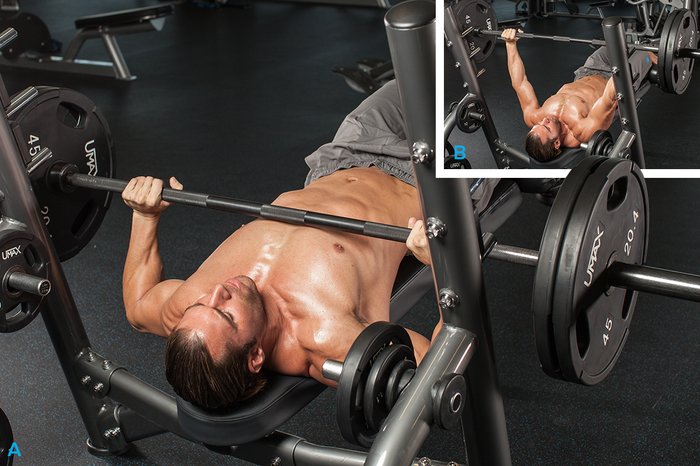
While the bench press on the flat bench is a great chest builder, it's not the only one, and not necessarily the best one.
Whereas you might be able to decline press 225 pounds for 8 reps when it's slotted in the number 3 position in your routine, doing it first may allow you to handle 225 pounds for 11 reps, or perhaps 245 pounds for 7.
Now you're working the lower-chest muscles completely unaccustomed to that volume or intensity, thus turning on a growth signal. Particularly for intermediate-level bodybuilders whose results have flatlined, a simple change like this can elicit new growth when the otherwise-stagnant flat-bench-first approach has long gone stale.
4. Never Do Your Incline Barbell Presses On A Fixed Bench
Sometimes this is unavoidable, of course, and most of us started out using a fixed bench exclusively. But over time, it can set you up for frustration.
Why? Depending on the manufacturer, fixed benches are usually pretty steep. What happens when an incline bench becomes more vertical? Your bench press gets closer to a shoulder press, meaning the smaller and weaker front delts take on an increasing amount of the load, rather than the pecs. You're probably familiar with that burning feeling in your delts after a hard set of incline bench.
There's an easy remedy for this. Instead of using the fixed bench, go for an adjustable bench instead. You can easily decrease the degree of incline a little or a lot. Most adjustable benches offer a number of bench positions between 0 and 45 degrees, and my advice it to use them all!
No one ever said that the flat bench, incline, and decline were the only angles you were restricted to using to fully develop your chest. Do some sets on the low (15 degree) incline, others at the moderate (30 degree) incline, and some as high as 45 degrees.
5. Never Press Your Flyes
It's natural to want to push the most weight you can in your chest training, but there's one area where that becomes especially counterproductive, and that's when doing flyes. Your natural inclination is to find a way in which you can move the weight, and you do that by turning what was supposed to be a single-joint movement back into a multijoint one. This is incredibly common.
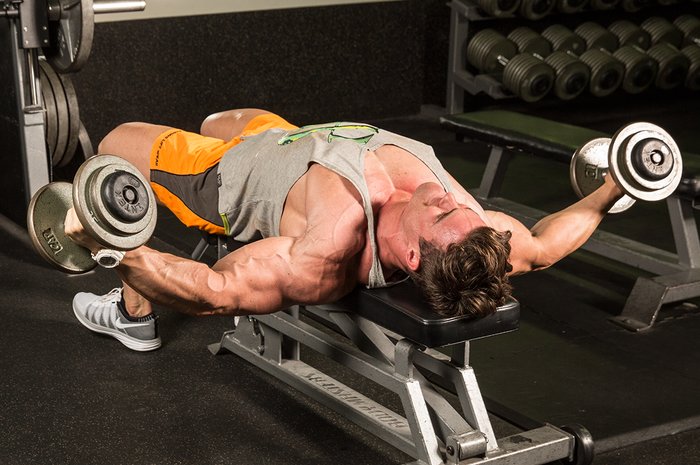
Learn the precise motion of fly-type movements and keep your elbows locked in the slightly bent position throughout the set.
Learn the precise motion of fly-type movements and keep your elbows locked in the slightly bent position throughout the set. You shouldn't be able to use much weight with flyes by design, so avoid weights you'll end up pressing. More pressing simply means more sets of a movement you've probably already done, and a reduction in the crucial pectoral stretch that a properly executed fly produces.
6. Never Open And Close At The Elbows During Cable Cross-Overs
This is similar to the last problem, but it's so prevalent on cables it deserves to be called out.
As with flyes, maintaining locked elbows that are only slightly bent is key during cable cross-overs. That means the hands should stay out away from the body during the negative contraction, and the outer pecs should contract to help bring them back together. If your elbows are bent about 30 degrees in the extended position, they should be about 30 degrees at the top!
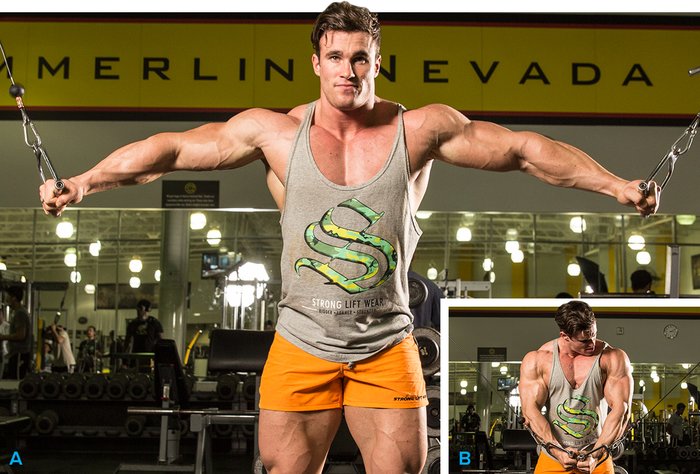
As with flyes, maintaining locked elbows that are only slightly bent is key during cable cross-overs.
Sure, it's far easier to press them, and move more weight in the process. But save your heroic weight pushing for the bench, where it can produce the biggest anabolic stimulus. If someone gives you crap about the weight you're using on a cable cross-over, it just shows they don't know what they're talking about. Use a weight you can control, and keep your elbows from extending.
7. Never Restrict Your Barbell Grip
Grip width is another area where people tend to get into ruts. Some bodybuilders bench wide like powerlifters for years, even though they'd never dream of entering a powerlifting competition. Others only do close-grip benches, even though they're pushing far less weight than they could otherwise.
Which one is right? They both are. As beginners progress to intermediate and then advanced status, they use different bench angles and types of equipment on chest day for better overall muscular development. But the variations in training stimulus don't stop there. Where you grip a barbell, from close to wide, also alters the angle of the training stimulus. For example, a close grip on the bench press works both the triceps and the inner chest, while a very wide grip hits the outer pecs to a great degree as well as the shoulders, and you get far less triceps involvement.
Whether it's with a barbell or the handle of some machines, remember that both extremes (very wide and very close) are likely to be harder at first than what you're accustomed to. But this difficulty is a good thing! Experimenting with alternative grips —and with all the options mentioned here—can help breathe new life into a routine that has lived past its life expectancy.
8. Never Bench Without Retracting Your Shoulder Blades
The concept of chest training seems relatively simple: Lower the weight to your chest, and push back up to arm extension. But "simple" rarely tells the whole story.
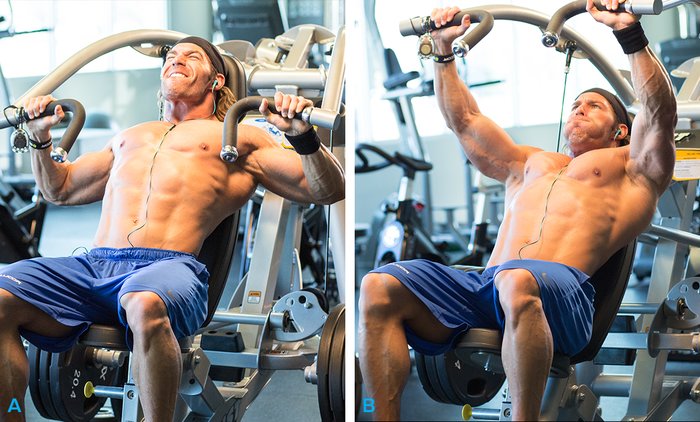
Practice retracting your shoulder blades on a few light-weight sets of bench presses, so it becomes natural. It's a motion you can use with any kind of equipment and any of the bench-press angles.
Experts will instead tell you to drive your shoulder blades into the bench on the negative or lowering portion, which better stabilizes your shoulders. This allows the pecs to open up and achieve a better stretch, meaning you'll put less stress on your delts and more on your chest—exactly what'll help focus the load right where you want it. You know you're doing it right when you see your chest puff out as your lower the weight.
Practice retracting your shoulder blades on a few light-weight sets of bench presses, so it becomes natural. It's a motion you can use with any kind of equipment and any of the bench-press angles.



